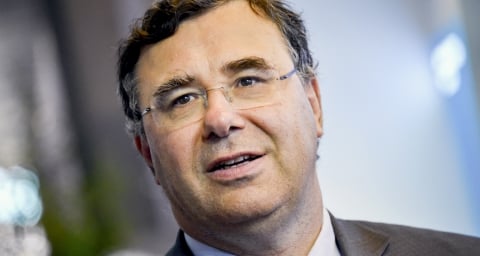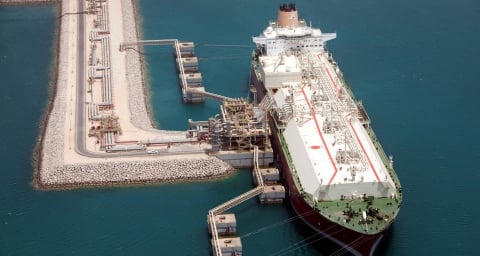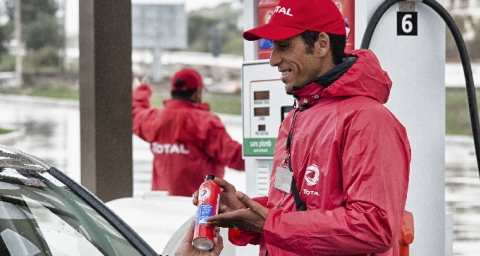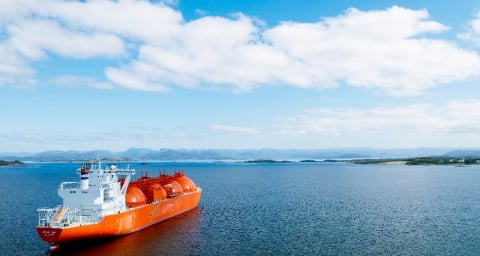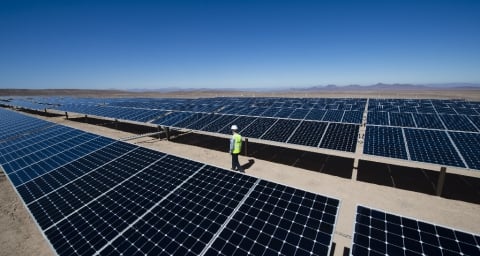05/24/2016
This interview was published following the Cop21 in Paris in 2015. TotalEnergies' energy transition strategy, which was already underway at that time, has naturally evolved. For our most recent energy transition and climate commitments, please refer to our Sustainability & Climate 2023 Progress Report.
Energy is at the heart of the challenges we face to keep the global average temperature rise below 2°C. What mechanisms can be put in place and what conditions favor success? A conversation with Patrick Pouyanné, Chairman and Chief Executive Officer of Total.
Will the Paris climate agreement change Total’s strategy?
The agreement confirms that we were right to make climate a cornerstone of our strategic vision. We have been taking practical steps since 2000 to reduce the impact of our activities. We were among the first in our industry to publish quantified improvement objectives. Since 2008, we have applied an internal carbon price to our projects and in 2011 began investing significantly in renewable energies. This strategic approach has taken shape gradually. And this year we’re taking a decisive step by creating a combined Strategy & Climate Division, because climate, a global concern, must be fully integrated into our overarching strategy. In the energy sector, the “COP21 effect” also means that businesses are becoming far more proactive. Here at Total, we have lobbied strongly for international initiatives, such as the Oil & Gas Climate Initiative, that will reshape our industry.
Is this report a means for Total to respond to these expectations?
Yes, and its appropriateness was discussed and approved by the Board of Directors. The report has three main goals. First, to share our ambition for Total in 2035: we have chosen a timeline that is consistent with the International Energy Agency’s (IEA) 2°C scenario. Second, to specify how this scenario impacts our decision-making process. And third, this report is an opportunity to review the actions we have already implemented, the initiatives we are currently undertaking, the investments we are planning to secure for the future and the indicators we use to track our performance.
What are Total’s objectives for 2035? Is climate change the company’s biggest challenge?
Keeping the global temperature rise below 2°C is a challenge everyone must meet. The next 20 years will be decisive in building a low-carbon future that does not curb economic and social development. In 2040, the global population is projected to be 9 billion. That includes 2 billion people in Africa alone, where over 600 million people today do not have access to electricity. That figure worldwide is 1.2 billion.
I believe our main responsibility is to help provide safe, affordable energy solutions to as many people as possible, while managing energy consumption and the related emissions. Doing this will entail improving energy efficiency across the board, optimizing the fossil fuel mix and accelerating the development of renewable energies. Our ambition is to position Total as a global leader in these three priority areas and drive progress. Our integrated business model, which spans producing, refining or processing and marketing oil and gas, will be our biggest advantage in achieving this goal.
It enables us to take action across the entire energy value chain and keeps us in touch with our customers’ expectations. The challenge is not just to produce an energy mix that generates fewer emissions.
We also have to continue reinventing our relationships with customers worldwide, by keeping pace with changes in energy use, adopting digital technology and adapting to macro-trends such as urbanization.
Lastly, preparing for the future means speeding up the development of carbon capture, use and storage technologies. We therefore plan to allocate up to 10% of our R&D budget to this area over the coming years.
How important will renewable energies be in Total’s portfolio in 2035?
Extremely important! Our ambition is summed up by the motto “20% in 20 years.” We want to make low-carbon businesses a genuine and profitable growth driver accounting for around 20% of our portfolio in 20 years’ time.
Over the coming decades, the growth in electricity demand will outpace global energy demand. Achieving the 2°C scenario hinges on using renewables to generate power. This is one opportunity for us.
Our experience gives us a clear advantage. We have been producing biofuels for over 20 years and are the top marketer in Europe. We aim to build on our front-ranking position in biodiesel and biojet fuel: by next year, our La Mède refinery in France will have been transformed into a world-class biorefinery. Through our affiliate SunPower, we are a top three solar player. The challenge will be to maintain that position and to successfully expand our operations — especially in Africa, which is likely to leapfrog to distributed generation based on renewable energies. Already deployed in over 30 countries, our Total access to energy solar program provides us with valuable experience in understanding the challenges ahead.
Moreover, the simultaneous growth of gas and renewables is encouraging us to take a broader approach to the end-to-end electricity value chain. We want to develop a renewable power trading business. We are also positioning ourself in energy storage with our recently announced acquisition of Saft.
Lastly, we will be reexamining the potential of other renewable energies, in particular onshore wind power. However, we will not include any nuclear activity in our portfolio.
Energy efficiency is a major 2°C scenario driver. What are your objectives in this area?
We want to do much more to help our customers. Their attitudes and behaviors in terms of reducing energy costs and their environmental impact are changing fast. And this trend is going to pick up speed with digital technologies.
We want to innovate to bring our customers new products and services that will help them make informed choices about energy and manage their consumption. Promoting hybrid solutions combining oil or gas and renewables is one avenue; another is providing energy efficiency services for industrial sites. Our ambition is to cover the manufacturing and transportation sectors.
We are a leading energy company recognized for both our closeness to customers and as an attentive partner. We intend to build on this valuable asset.
You have set some very ambitious goals. Where do the changes need to start?
It is vital for our stakeholders and for us that we clarify our position and share our ambition for the next 20 years. It’s not a shift, it’s a genuine ramp-up.
But I know we can succeed, because this transformative project reflects the aspirations of everyone at Total and their desire to find meaning in what they do. Rising to the challenges of the 2°C scenario is so important that we have no other choice than to be ambitious.




